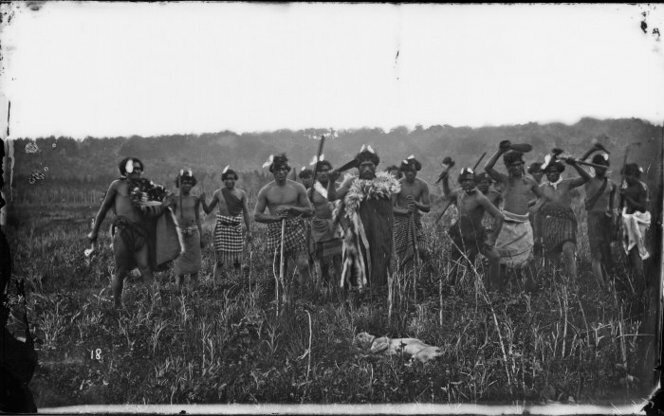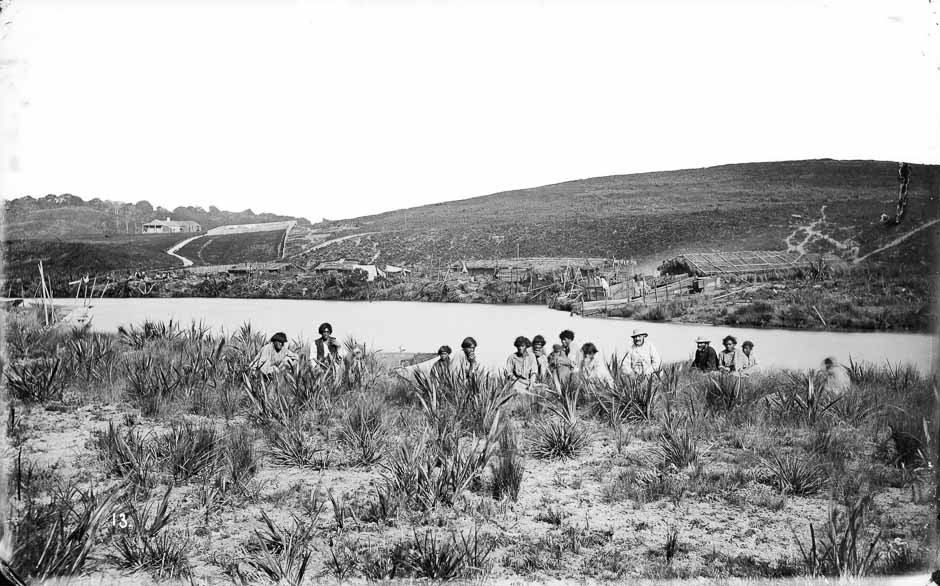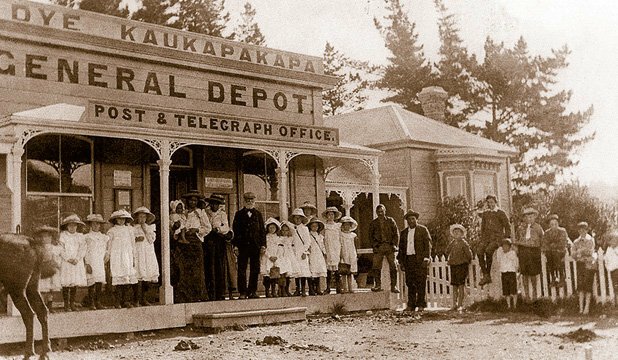
 (Image: Settlement on the Kaipara)
(Image: Settlement on the Kaipara)From early settlers ....
Around 1300AD the Māhuhu waka arrived in the Kaipara. Rongomai and many of his crew settled on a promontory of land called Taporapora, just inside the harbour entrance. Their marriage to local women produced a new generation of Kaipara people, forming the nucleus of the Ngāti Whātua. The origin of the tribal name is thought to stem from a great grand-daughter of Rongomai, Te Whātua-kaimārie.
The next major influence on the lives of the Kaipara people occurred around 1450AD, when a party of Ngāti Awa led by Tītahi moved in and settled west of the Kaipara River, where they lived in comparative peace for some 150 years. Territorial disputes eventually lead to war between Ngāti Awa and Ngaoho - Ngāti Whātua became victims of attacks on pā all along the Waitākere coast.
Victories and defeats on the battlefield, and subsequent intermarriage lead to the formation of a new tribe, Kawerau. Returning Ngāti Whātua sought intermarriage with Kawerau, although as more Ngāti Whātua resettled in the fertile South Kaipara there were times of friction leading to skirmishes and eventually war.
Ngāti Whātua enlisted the support of Tainui warrior Kawharu, who proceeded to conquer pā all down the Kaipara - giving rise to the description of the fresh water dune lakes that dot the landscape as 'the footsteps of Kawharu'.
There followed the arrival of Hoemoewārangi who conquered many pā before himself being killed - an event that was eventually avenged by Ngāti Whātua warriors who invaded south Kaipara in the waka Te Pōtae o Wahieroa and Te Whārau. Many of the descendants of these men live here today.
By 1740 the migration of Ngāti Whātua was complete, and the remaining Kawerau and Waiōhua women living in the head waters of the Kaipara River married into the tribe.
The newly settled hapū of Ngāti Whātua were to be called to war again in the mid 1700s, when the chiefs who had led the Te Pōtae o Wahieroa and Te Whārau waka - notably Waha-akiaki, Hukatere, Tuperiri, Atiākura and Waitāheke - repulsed revenge attacks by Kawerau and Waiōhua.
A new threat emerged from 1818 when Ngāpuhi under Hongi Hika attacked with superior musket strength. These raids caused many Ngāti Whātua to retreat from the Kaipara, eventually returning to their Kaipara homelands after Hongi Hika's death.
This was also the time of European contact, and the arrival of Reverand Samuel Marsden.

Privacy | Sitemap | Website design by MOCA
Copyright © 2018 - 2025 Nga Maunga Whakahii o Kaipara. All rights reserved.